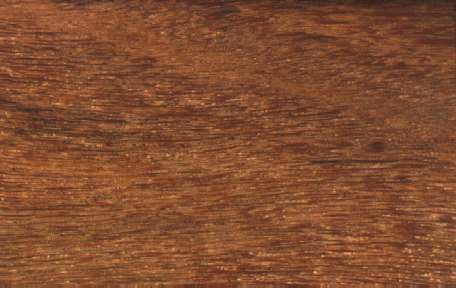 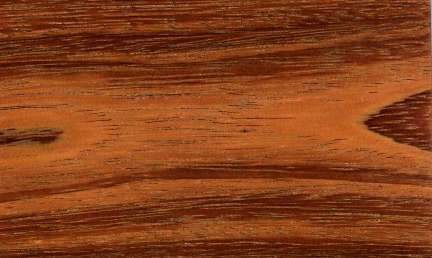 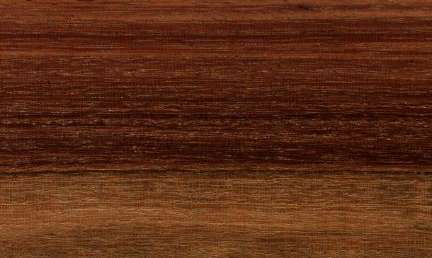 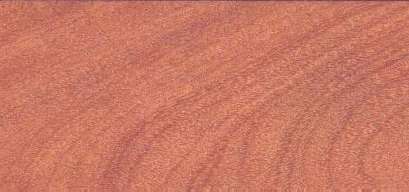 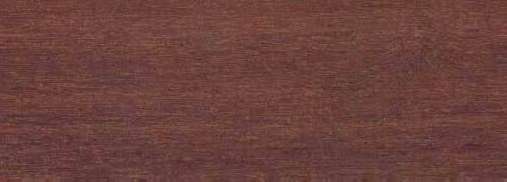 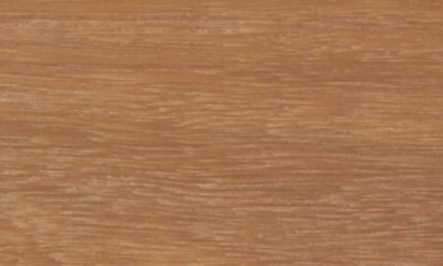
Tonka (Dipteryx odorata)
Family: Papilionaceae
Common names: Almendro, Baru, Barujo, Bois de coumarouna, Camaru, Charapilla, Comarre, Coumarouna, Cumaru, Cumaru amarello, Cumaru da folha grande, Cumaru do Amazonas, Cumaru ebo, Cumaru roxo, Cumarut, Cumbari, Cunuru, Ebo, Faux gayac, Feurier, Gayac, Gayac de cayennee, Gayal, Gomorrow, Groot locus, Koemaroe, Kumaru, Male, Quamare, Sarrapia, Shihuahaco amarillo, Tonca bean, Tonka, Tonka gaiae, Tonkebean, Tonquin bean
Distributed in: Brazil, Colombia, Columbia, Costa Rica, French Guiana, Guyana, Honduras, Jamaica, Panama, Suriname, Venezuela (Central America, Latin America, Oceania and S.E. Asia)
Distribution overview: The Guianas, Venezuela, Colombia, and the Amazon region of Brazil; reaches its best development on well-drained gravelly or sandy sites. Cultivated in many areas for the tonka beans used as a flavoring.
Common uses: Agricultural implements, Axles, Barge fenders, Bearings & bushings, Bridge construction, Building construction, Building materials, Bushing blocks, Cabin construction, Cabinetmaking, Construction, Crossties, Docks, Dockwork, Domestic flooring, Factory construction, Factory flooring, Farm vehicles, Fishing rods, Flooring, Furniture, Handles, Handles: general, Harbor work, Heavy construction, Machinery parts, Marine construction, Mine timbers, Parquet flooring, Piling, Pulpmill equipment, Railroad ties, Shafts/Handles, Sporting Goods, Sub-flooring, Tool handles, Turnery, Vehicle parts, Veneer: decorative, Wheels
Product sources: The ITTO reports that timber from this species is produced regularly. Export potential is rated as fair. The wood is imported from Brazil into China and Japan.
Environment profile: Status unknown due to inadequate information
Tree size: Trunk diameter is 300-350 cm
Colors: the heart isReddish brown, Yellow to golden-yellow to orangeand the sapwoodYellow, Yellowish brown.The grain isStriped figure, the textureUniformand the lusterSlightly lustrous
Natural durability: Very durable, Very durable
Odor: No specific taste
Silica Content: Siliceous
LightInduced Color Change: Lighter
Kiln Drying Rate: Slow
Drying Defects: Slight surface checking, Splitting
Ease of Drying: Slowly
Tree Identification: Bole/stem form is not buttressed
Comments: General finishing qualities are rated as good The wood is slightly superior to Greenheart (Ocotea rodiaei ) in all mechanical properties except side hardness and tension perpendicular to grain.
Blunting Effect: Moderate
Boring: Fairly easy to very easy
Carving: Fairly Easy to Very Easy
Cutting Resistance: Moderate to saw
Gluing: Poor gluing properties
Mortising: Fairly Easy to Very Easy
Moulding: Very Good to Excellent
Movement in Service: Very Good to Excellent
Nailing: Fairly Easy to Very Easy, Very Good to Excellent
Planing: Straight grained and easy to work in most machining operations
Resistance to Impregnation: Sapwood is permeable
Response to hand tools: Moderate working qualities
Routing recessing: Fairly Easy to Very Easy
Veneering qualities: Suitable for slicing, Veneers easily
Steam bending: Unsuitable
Screwing: Fairly Easy to Very Easy, Very Good to Excellent Results; Turning: Fairly Easy to Very Easy
Polishing: Very Good to Excellent; Staining: Fairly Easy to Very Easy;
- Numerical data Metric
- Numerical data English
- Strength properties
- References
 |
 |
 |
 |
| Item |
Green |
Dry |
Metric |
| Specific Gravity |
0,78 |
0,82 |
|
| Density |
|
1041 |
kg/m3 |
| Bending Strength |
1349 |
1914 |
kg/cm2 |
| Crushing Strength |
663 |
953 |
kg/cm2 |
| Hardness |
|
1411 |
kg |
| Impact Strength |
|
96 |
cm |
| Shearing Strength |
|
170 |
kg/cm2 |
| Stiffness |
187 |
214 |
1000 kg/cm2 |
| Tangential Shrinkage |
7 |
|
% |
| Radial Shrinkage |
4 |
|
% |
| Weight |
1025 |
833 |
kg/m3 |
| Maximum Load |
0,7 |
0,98 |
cm-kg/cm3 |
| Toughness |
|
299 |
cm-kg |
| Static Bending |
|
|
kg/cm2 |
|
 |  |  |  | | Item | Green | Dry | English | | Bending Strength | 19198 | 27236 | psi | | Density | | 65 | lbs/ft3 | | Hardness | | 3111 | lbs | | Impact Strength | | 38 | inches | | Maximum Crushing Strength | 9430 | 13561 | psi | | Shearing Strength | | 2419 | psi | | Stiffness | 2660 | 3051 | 1000 psi | | Toughness | | 260 | inch-lbs | | Work to Maximum Load | 10 | 14 | inch-lbs/in3 | | Specific Gravity | 0.78 | 0.82 | | | Weight | 64 | 52 | lbs/ft3 | | Radial Shrinkage | 4 | | % | | Tangential Shrinkage | 7 | | % | | Volumetric Shrinkage | 12 | | % | |
Bending strength (MOR) = very high 0
Modulus of Elasticity (stiffness) = very high
Max. crushing strength = very high
Density (dry weight) = 67-75 lbs/cu.ft
Density (dry weight) = 61-67 lbs/cu. ft
Density (dry weight) = >75 lbs/cu. ft
Shearing strength (parallel to grain) = medium
Hardness (side grain) = very hard
Hardness (side grain) = hard
Density (dry weight) = 53-60 lbs/cu. ft
Shrinkage, Tangential = moderate
Shrinkage, Radial = moderate
Max. crushing strength = low
Shearing strength (parallel to grain) = high
Bending strength (MOR) = high
Shrinkage, Tangential = fairly large
Shrinkage, Radial = fairly large
Max. crushing strength = high
Density (dry weight) = 46-52 lbs/cu. ft.
Bending strength (MOR) = medium
Berni, C.A., Bolza, E., Christensen, F.J.,1979,South American Timbers - The Characteristics, Properties and Uses of 190,Species,C.S.I.R.O Div. Building ResearchBrown, W.H.,1978,Timbers of the World, No. 9 Central America and the Caribbean,TRADA, Red Booklet SeriesChichignoud, M., G. Deon, P. Detienne, B. Parant and P. Vantomme.1990.Tropical Timber Atlas of Latin America.International Tropical Timber Organization (ITTO, Centre Technique Forestier Tropical, Division of CIRAD, 45 bis Avenue de la Belle Gabrielle, Nogent-sur-Marne, CEDEX, France.Chudnoff, M.,1984,Tropical Timbers of the World,U.S.A. Department of Agriculture, Forest Service, Forest Products,Laboratory, Madison.Ducke, A.,1943,The Most Important Woods of the Amazon Valley,Tropical Woods,12(74,pp1-15Erfurth, T., Rusche, H.,1976,The Marketing of Tropical Wood B. Wood Species from S. American Tropical,Moist Forests,F.A.O. Forestry DepartmentFanshawe, D.B.,1954,Forest Products of British Guiana Part 1 Principal Timbers,Forest Department British Guiana Forestry Bulletin (New Series 2nd,Edition,No.1Hess, R.W., Wangaard, F.F., Dickinson, F.E.,1950,Properties and Uses of Tropical Woods 2,Tropical Woods,13(97,pp1-132Howard, A.L.,1948,A Manual of Timbers of the World.,Macmillan & Co. Ltd. London 3rd ed.Kribs, D.A.,1950,Commercial and Foreign Woods on the American Market (a manual to their,structure, identification, uses and distribution,U.S.A. Penn. State College, Tropical Woods LaboratoryLamb, A.F.A., Wangaard, F.F.,1950,The Gluing Properties of certain Tropical American Woods,Yale Univ. School of Forestry Technical Report,4Longwood, F.R.,1962,Commercial Timbers of the Caribbean,U.S.A. Department of Agriculture, Agriculture Handbook,No.207Loureiro, A.A., Freitas da Silva, M.,1968,Catalogo das Madeiras da Amazonia (2 vols,Min. do Ultramar Belem BrasilTakahashi, A.,1975,Compilation of data on the Mechanical Properties of Foreign Woods (Part 2,Central and South America,Shimane University, Japan, Research Report on Foreign Wood No.4Teixeira, D. E., M. A. E. Santana and M. Rabelo de Souza.1988. Amazonian Timbers for the International Market.ITTO Technical Series 1.Brazilian Institute for Forestry Development, Brazil.Wangaard, F.F., Muschler, A.F.,1952,Properties and Uses of Tropical Woods 3,Tropical Woods,14(98, pp1-190
|













